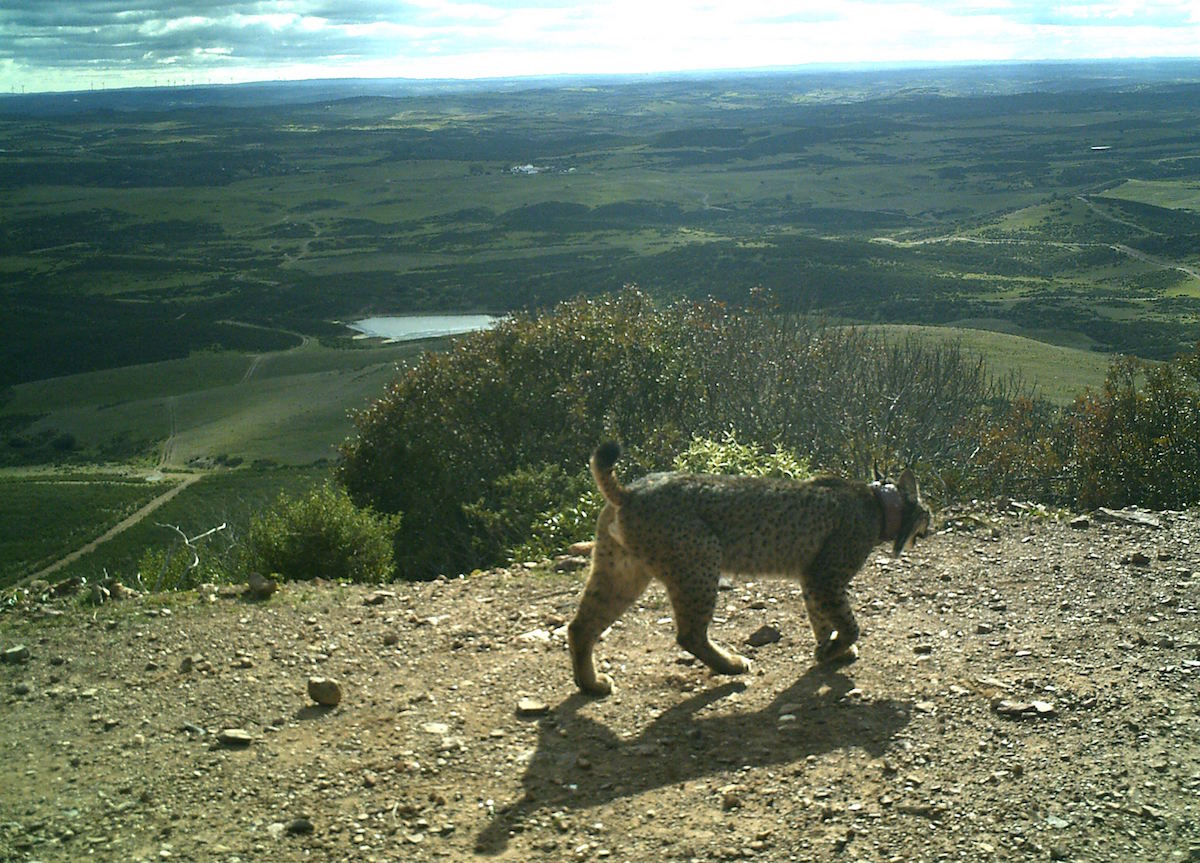Iberian-lynx is one of the most threatened mammal species of the planet. We’ve prepared a guide for you to know what Portuguese and Spanish conservationists are doing in 2016 to save this species.
All of this year conservation work on the Iberian-lynx (Lynx pardinus) is being prepared since October 2015. Dozens of experts work together to save this species, both in the breeding centres and in the wild, specifically in the selected areas for the reintroduction. This is a small guide to help you navigate through the news in 2016.
LYNX TO RELEASE:
During this year a total of 48 lynx will be released into the wild in the Iberian Peninsula, 45 of them born in 2015 in four breeding centres in Portugal and in Spain: in Silves, in El Acebuche (Huelva), Zarza de Granadilla (Cáceres) and La Olivilla (Jaén), said Miguel Ángel Simon, director of Iberlince project (ending in December 2017). The remaining three lynx come from the population of Sierra Morena, in Spain.
SELECTED REINTRODUCTION AREAS:
The 48 lynx will be released in seven regions: nine in the Guadiana Valley (six females and three males), nine in the Matachel Valley (Badajoz), 10 in Montes de Toledo, nine in the Eastern Sierra Morena (Ciudad Real), five in Guadalmellato, five in Guarrizas and one as a genetic reinforcement of populations in Doñana.
WHEN:
The releases will take place from January to April.
THREE BIG CHALLENGES FOR 2016:
According to Miguel Ángel Simon, Iberlince work for next year will focus on three main objectives: “ensure the survival of the released animals in all the reproduction areas; establish the lynx as territorial, ideally with reproduction; and connect the areas of reintroduction to the already established populations in the Iberian Peninsula. This is already being achieved in Guadalemellato-Cardeña-Andujar-Guarrizas-Eastern Sierra Morena”, he added.
HOW MANY LYNX ARE THERE IN THE WILD?
The results of the 2015 Iberian-lynx census are only to be expected in February. But, according to the most updated census, in 2014 there were 327 animals in four populations in Andalusia. The largest is the one of Andújar-Cardeña (with 161 lynx), followed by Doñana (80), Guadalmellato (45) and Guarrizas (41). The last two are the most recent populations, with reintroductions beginning in 2010 and 2011, respectively.
Since reintroductions only started in 2014, we cannot consider that there are stable populations in the Valley of Guadiana – the same in Hornachos- Vale del Matachel and Campo de Calatrava and Montes de Toledo.
Yet it is known that there are nine lynx in the Valley of Guadiana, ten in the Valley of Matachel and eight in the Montes de Toledo. It is estimated there are seven lynx in Eastern Sierra Morena.
HOW MANY ANIMALS LIVE IN PORTUGAL?
The teams on the ground accompany nine lynx released in 2014/2015 in the Valley of Guadiana: Katmandu, Jacarandá, Kempo, Loro, Liberdade, Lluvia, Lagunilla, Luso and Lítio. Meanwhile, other two lynx live in Portugal, having arrived from Spain: Kahn and Kentaro.
WHAT ARE THEY DOING AT THIS TIME OF THE YEAR?
Usually, lynx start looking for mates from December on. Mating can occur until January and the young begin to be born from March on.
THE GREATEST THREATS TO THE LYNX:
To Miguel Ángel Simon, the biggest conservation challenges for the Iberian-lynx in the near future are the control of wild-rabbit diseases (the main prey of lynx) and the control of deaths from trampling, poaching and poison.


